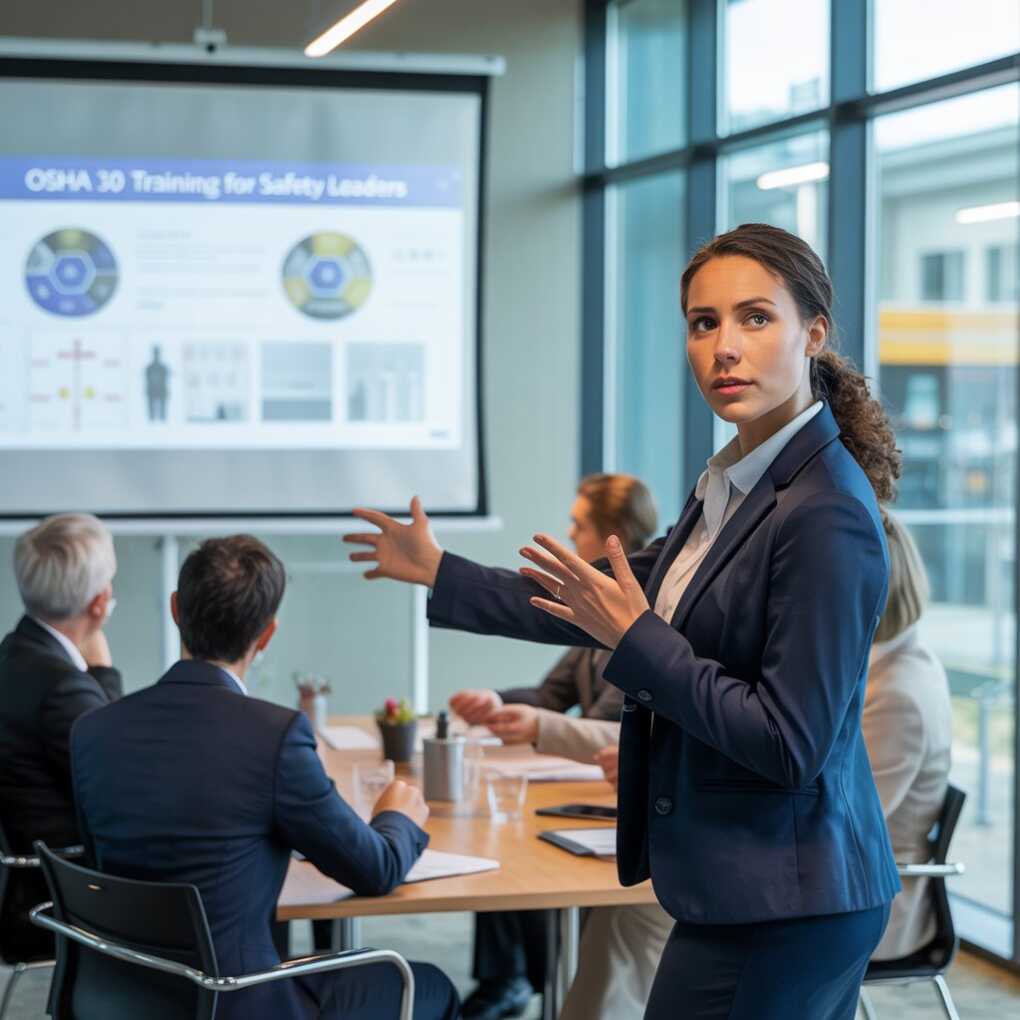The thriving workplaces today put leadership skills first, which champions safety and drives results. Under the Occupational Safety and Health Administration Act, the OSHA 30-hour training program is an advanced safety education course that equips leaders, supervisors, and safety managers who are tasked with workplace safety responsibilities.
The Washington Post publication titled How regulators failed to close the deadliest workplace in America, 2025, reports that the annual number of fatal work injuries jumped by 15 percent from 2013 to 2023. By applying OSHA 30 knowledge, safety professionals help organizations reduce workplace injuries. Leaders can gain the skills and capacity to strengthen and uphold safety regulations, lead incident investigations, and drive a vigilant safety culture.
Do you want to be one of those leaders who put safety first in the workplace? Read on, this blog shares some vital points of OSHA 30 training, its benefits, and how safety leaders can use them to enhance safety.

The Importance of OSHA 30 Training for Safety Leaders
The OSHA 30-hour course educates participants on safety standards, like how to recognize risks, risk detection, and risk mitigation techniques. It emphasizes hazard recognition and OSHA standards, encouraging safer workplaces and compliance with regulations. The OSHA safety card, received after course completion, signifies competence in upholding workplace safety and regulations.
If you are a supervisor outside the construction, agriculture, or maritime industries, OSHA recommends completing the 30-hour course. These safety leaders, who work at the forefront, gain advanced practical skills in identifying hazards, ensuring regulatory compliance, and leading effective safety efforts.
The course covers critical topics such as hazard recognition, OSHA regulations, fall protection, electrical safety, and emergency response. Quick threat identification boosts enforcement policies and compliance, and helps build investigative skills and refine communication. Fewer incidents follow, which strengthens organizational safety and commitment.
OSHA 30 Training Benefits for Enhancing Safety Leadership
Through this program, employees are given the chance to recognize, control, and eliminate hazards through the supervisors’ and related responsibilities program. With this knowledge, supervisors develop confidence in risk handling, decision-making, compliance, and reduce risks.
The main benefits of OSHA 30 are:
- Improved skill in detecting and managing potential threats
- Improved comprehension of federal safety codes
- Improved methods for conducting incident investigations
- Improved communication regarding safety practices
So, you can see how the OSHA 30-hour training helps reduce the number of workplace mishaps, translating to a safer workplace.
Core Topics and Customization in OSHA 30-Hour Training
The OSHA 30-hour program targets safety issues relevant to the construction, general industry, and maritime sectors, emphasizing vital safety themes including:
- Introduction to OSHA and worker rights
- Managing safety and health programs
- Hazard identification and prevention
- Emergency response and incident investigation
Modules on fall protection, machine guarding, confined spaces, scaffolding, and handling hazardous materials are also covered in the OSHA 30 program. Trainers design the curriculum to address specific workplace risks and complement the organization’s strategic priorities. Team leaders and safety coordinators acquire useful, applicable safety information from it.
Learner engagement includes highly interactive practice sessions with content narration and case studies based on real scenarios. The courses give special discounts for group enrollments and provide unrestricted 24/7 access on multiple devices. Expert trainers are available throughout the course to assist you whenever needed.
Implementing OSHA 30 Training for Organizational Impact
OSHA 30 training not only strengthens safety knowledge but also contributes to measurable reductions in workplace hazards. A direct correlation between trained supervisors and a decrease in incidents highlights the positive effect of the program in the workplace. To precisely evaluate this impact, human resources can analyze essential metrics pre- and post-training.
Focus on observing:
- The frequency of near-misses or accidents
- The degree of harm caused by events after training
- The frequency of reports flagged by employees
- Supervisor response speed in addressing known hazards
Reviewing statistics helps clarify how well teams embrace safety practices and identify areas of growth. By correlating data with training performance, companies can strengthen outcomes by investing in leadership-centric safety education, such as OSHA 30.
Join OSHA 30 Training and Lead Safer Teams!
Equip your safety team with powerful skills through OSHA 30-hour training. Primarily, this course is designed to target those in key safety roles like safety managers, supervisors, and team leaders. It centers on topics such as hazard detection, regulatory compliance, emergency handling, and incident analysis.
This training aims to fulfill industry-specific needs, reduce workplace risks, and enhance safety leadership. Evaluating safety results post-training confirms meaningful progress and strengthens a culture that prioritizes safety. Take action today by participating in the OSHA 30-hour training program to build a safer, wiser work setting.
